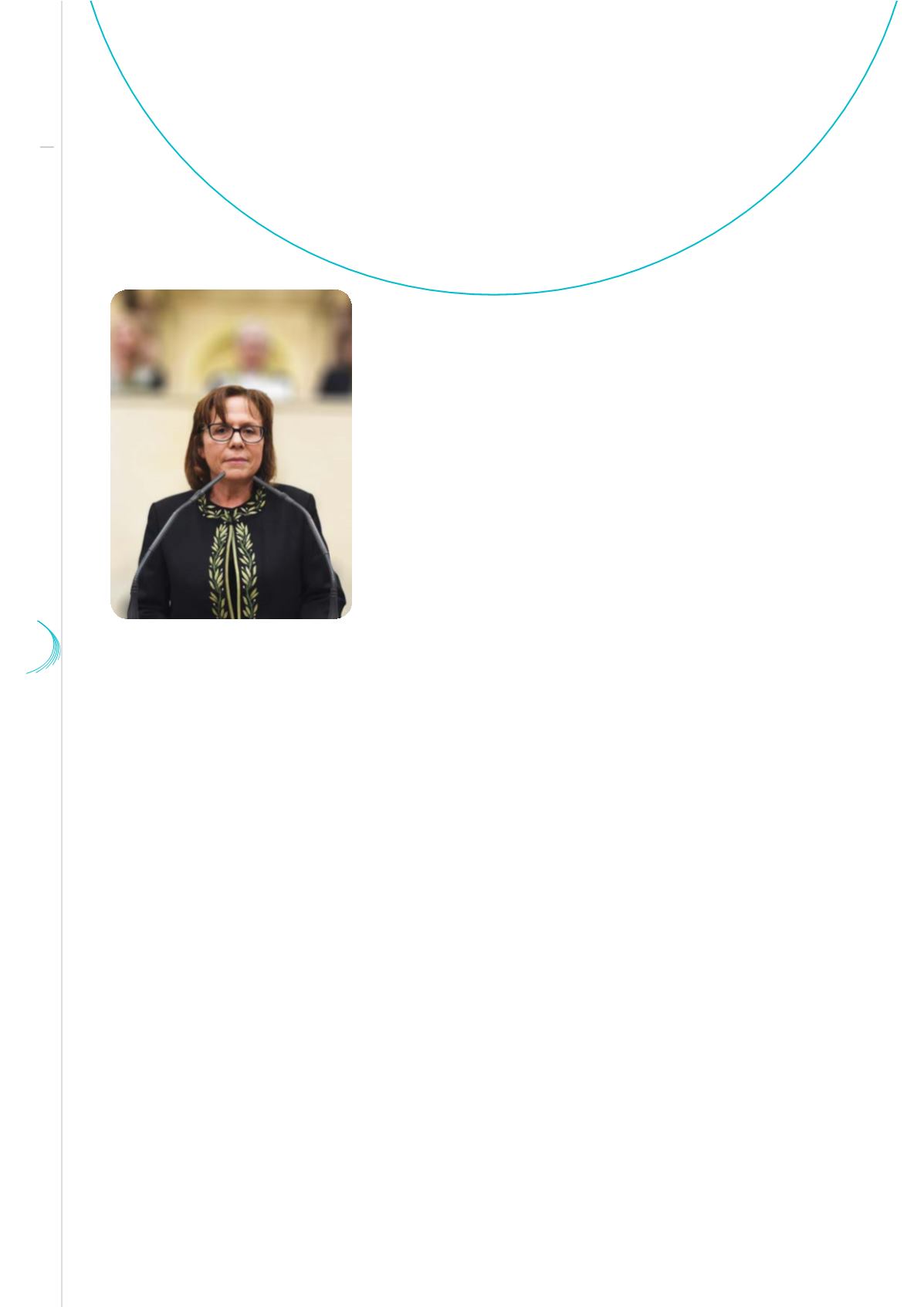

37 38
56
La Lettre
© B.Eymann - Académie des sciences
Anne-Marie Lagrange
Member of the Académie des Sciences, Senior Researcher at
CNRS, Institut de planétologie et d’astrophysique of Grenoble
During the last centuries, our understanding of the world
has considerably changed. Once Earth had lost the
specific status the geocentric system provided it and
once it had been recognised as one of the planets orbiting
the sun, it became possible to examine the formation of
the sun and its planets. Stars, comets, nebulae, galaxies
were observed, identified, catalogued, studied with ever-
increasing precision thanks to progress achieved in spyglasses, telescopes and other instruments,
as well as in physics, chemistry and geology. The observable universe kept on enriching itself and
growing. The possibility that planets were orbiting stars other than the sun – exoplanets – was
considered but it would take until the end of the 20
th
Century for any to be detected and the detailed
study of some known examples to begin.
The place of Earth in the Universe
In the 16
th
and 17
th
Centuries, the theological and philosophical conceptions that, since antiquity (Aristotle,
Ptolemy), had been placing Earth at the center of the world gradually lost ground as progress was being
made in the fields of celestial mechanics and gravitation. The works of Copernicus, then of Kepler, Galileo
and Newton, would now place Earth, and then the planets, in orbit around the sun, moving in accordance
with the universal laws of physics, which thus corroborated the intuition expressed by Aristarchus of
Samos in the 3
rd
Century B.C. Science could now gain its independence from religion – an idea d’Alembert
would cherish. The appetite for science grew, secular structures in which scientists would gather were
created, such as the
Académie des Sciences
in 1666 and, one year later, the
Observatoire de Paris
as the
workplace of the astronomer members of the Roi-Soleil’s Académie.
Planets and exoplanets


















